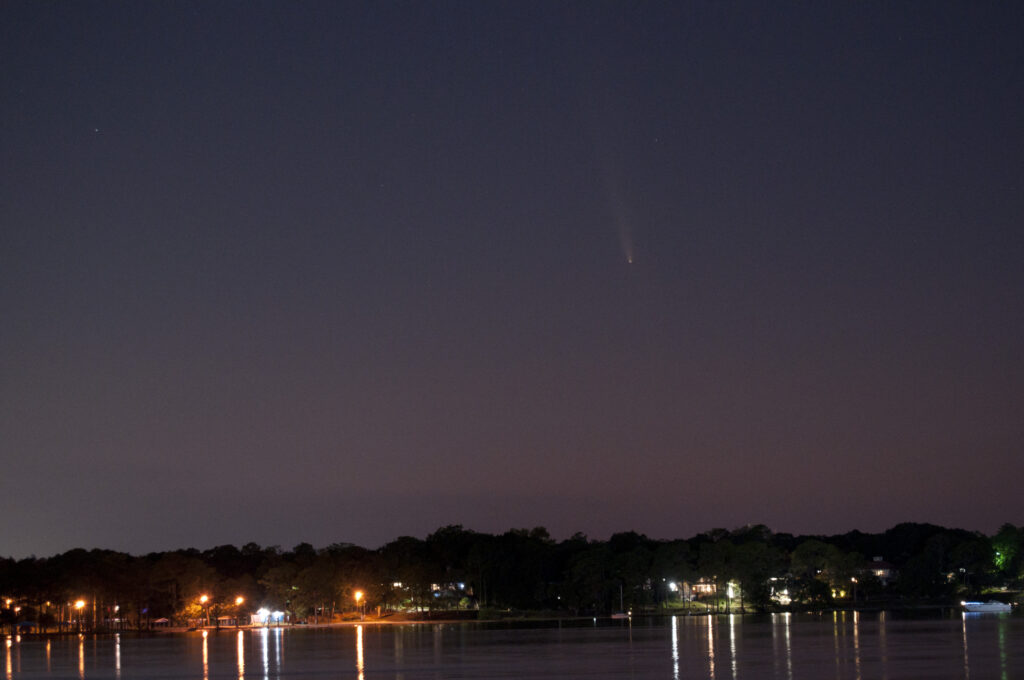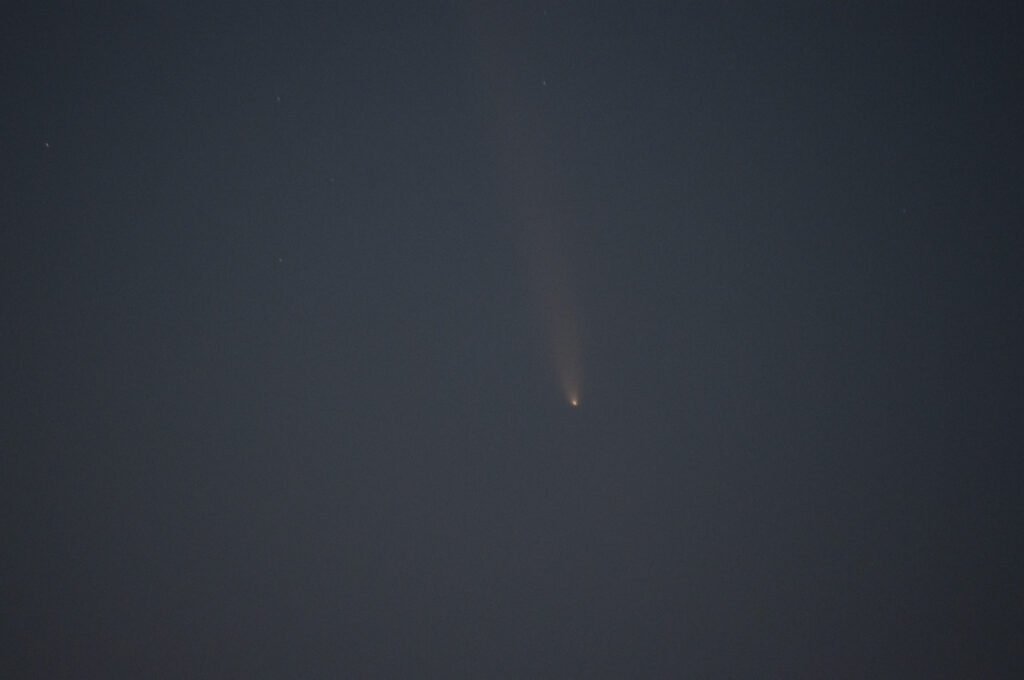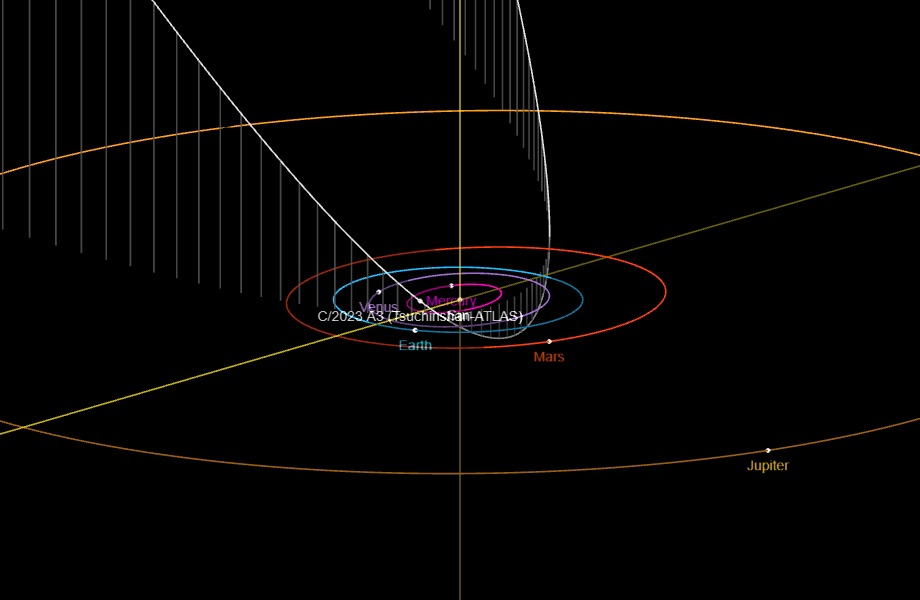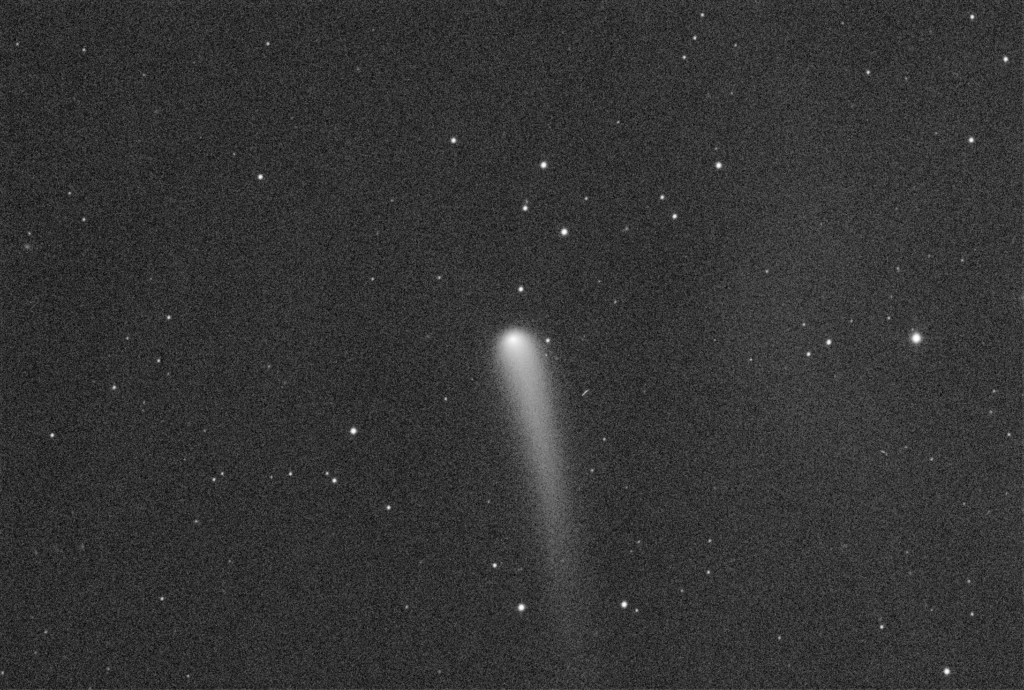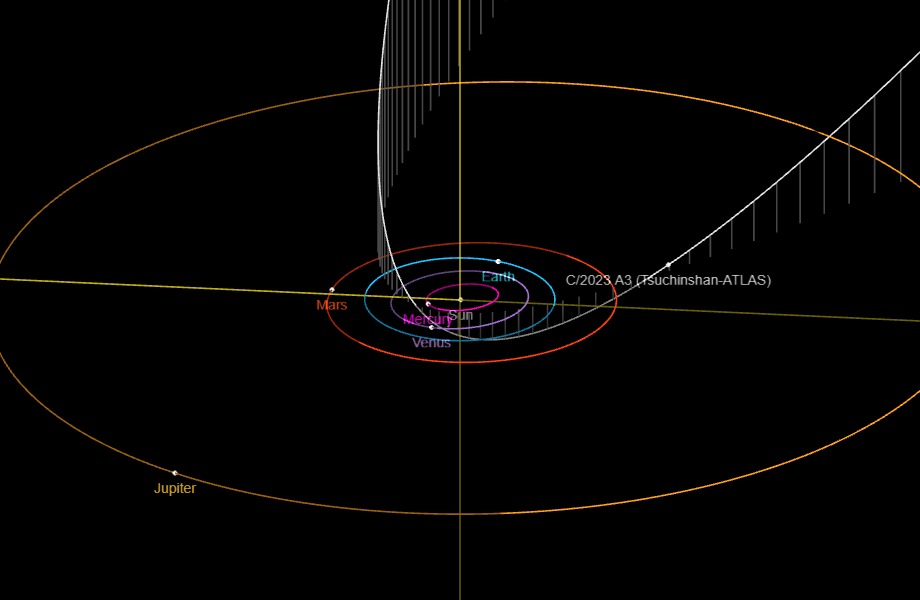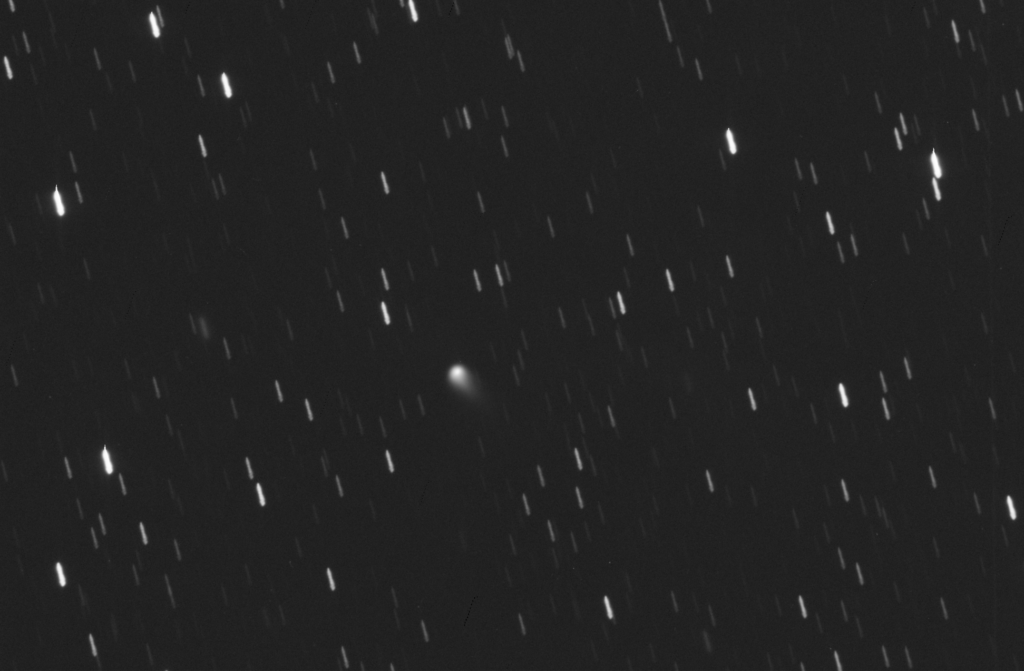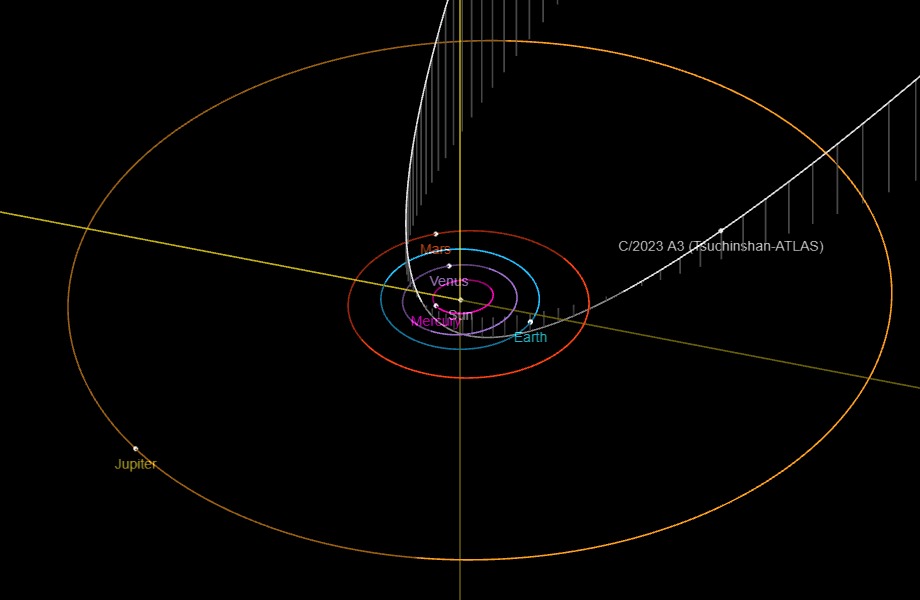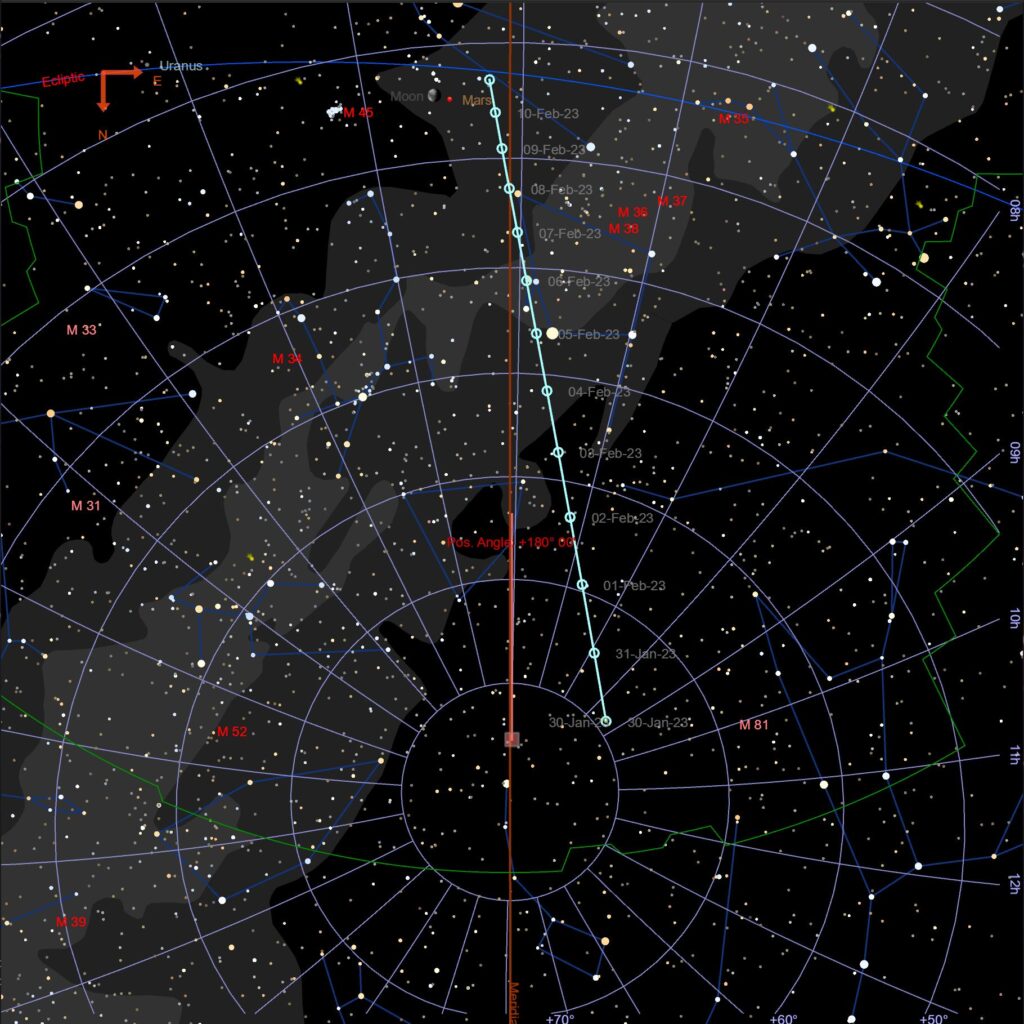These images of Comet C/2023 A3 (Tsuchinsan-ATLAS) were taken on the evening of the 13th of October from Niceville’s Lions Park on the shores of Boggy Bayou. This location has, as can be seen, a very low western horizon. Depending how experienced your eyes are will determine whether or not you can see the comet naked eye or not. Several observers at the park reported observing a prominent coma and tail. Others were not able to view the comet without binoculars or similar equipment. I fall into the second category.
I swapped the lens to one capable of 200mm for this slightly closer view.
Calculations using inbound observations show a retro-grade orbit. As can be seen in the orbit diagram below, most of the orbit is above the ecliptic with it only dipping below just outside the orbit of Mars and rising back above inside the orbit of Venus. The comet’s orbit relative to Earth’s has now shifted our view from the morning to the evening. It passed closest to the Earth yesterday (12 Oct 2024) and is now headed back towards the outer solar system.
Calculations show the current orbit is loosely bound to the Sun and the gravitational impact of its proximity to the inner planets will either shorten its orbit or the gravitational impact may send it out of the solar system entirely.
Astrometric observations taken now and for as long as the comet is bright enough will be factored into the outbound orbit calculations to find out what the comet’s ultimate destination will be. Whether or not I get to contribute any of those observations all depends on the manufacturer of my deep space camera finishing repairs in time. The camera is in the shop because the cooling fans stopped running. This leads to the camera overheating and shutting down.
I did get images of this comet as it came towards the inner solar system: C/2023 A3 (Tsuchinshan–ATLAS) (02 Jun 2024)
